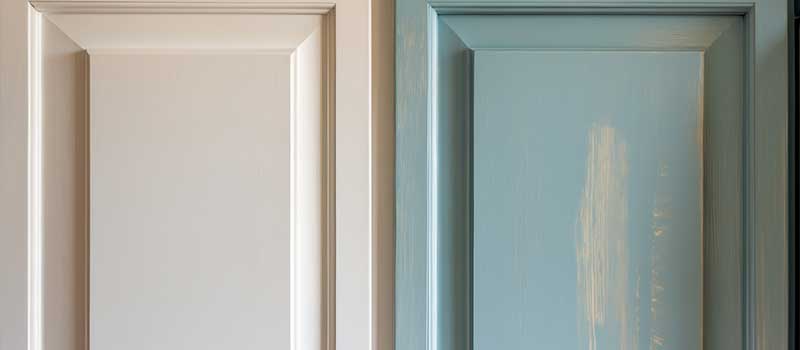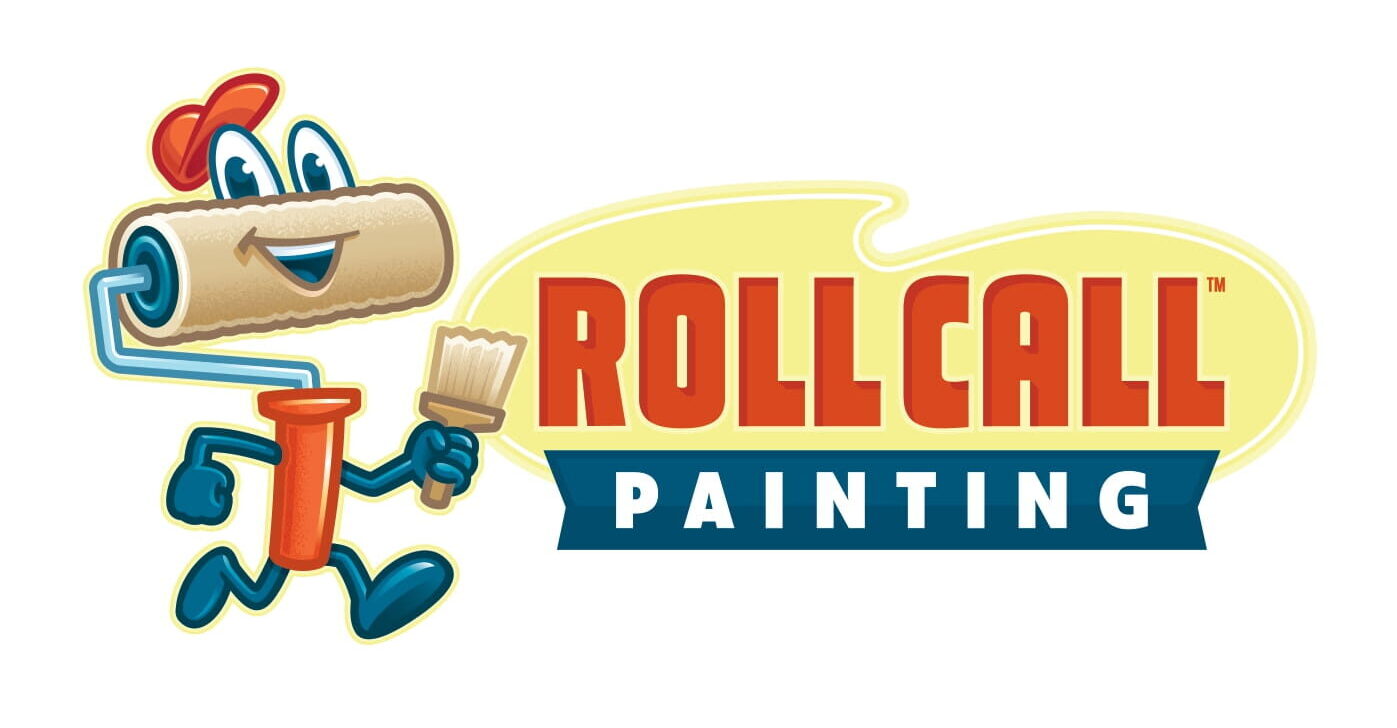Should I Paint My Kitchen Cabinets Myself? 7 Reasons You Shouldn’t

Painting kitchen cabinets yourself may seem like an easy DIY project, but it may end up costing more in the long run.
This guide explains why you shouldn’t paint kitchen cabinets yourself. Keep reading to learn these reasons and more.
If you still have questions about kitchen cabinet painting, call (316) 800-6994.
Should I Paint My Kitchen Cabinets Myself?
While painting your kitchen cabinets yourself may seem cheaper, it often turns out to be more costly than expected due to the challenges and potential for errors. You will spend time and money on quality materials—like specialty primers, cabinet-grade paints, and sealers—only to find that the finish starts chipping or peeling within a few years.
Without professional-grade tools like HVLP sprayers, DIY projects often result in brush marks, uneven coats, and a less durable finish prone to wear, especially around handles and high-touch areas.
Additionally, the extensive preparation required—cleaning, sanding, priming, and multiple coats of paint—can be tedious and time-consuming. If any step is rushed or skipped, the paint may fail prematurely, leading to costly touch-ups or a complete redo.
In contrast, professional painters have the equipment, techniques, and experience to achieve a long-lasting, flawless finish, often backed by warranties. A professional job saves time and stress and can prevent additional costs from frequent repairs and touch-ups.
Reasons You Shouldn’t Paint Kitchen Cabinets Yourself
Painting kitchen cabinets may seem like a straightforward DIY project, but numerous challenges make professional assistance the best choice. Here’s why you should think twice before taking it on yourself:
1. Preparation is Tedious and Time-Consuming
Achieving a professional-quality cabinet finish requires extensive preparation. This includes degreasing, sanding, cleaning, priming, and masking. Each step must be meticulously performed to ensure the paint adheres smoothly and lasts.
Skipping or rushing any of these steps can lead to chipping, peeling, and other issues that diminish your cabinet’s appearance and durability. Professionals handle this preparation with precision, saving you the time and energy needed for a long-lasting result.
2. Paints and primers found in standard stores may not have the durability required for cabinets, leading to premature wear
Many DIY-ers use readily available materials that aren’t designed for the demands of kitchen environments. Paints and primers found in standard stores may not have the durability required for cabinets, leading to premature wear.
Professional painters, on the other hand, use high-grade primers, paints, and finishes specifically formulated for heavy-use surfaces. These materials offer better adhesion and resilience, standing up to moisture, heat, and frequent cleaning.
3. Achieving a Smooth, Flawless Finish is Difficult Without Professional Equipment
A smooth, even finish is essential for cabinet painting, but most DIY tools—such as brushes and rollers—struggle to achieve this on cabinet surfaces. Professional painters use specialized equipment, like high-volume, low-pressure (HVLP) sprayers, to apply an even coat without brush marks, streaks, or uneven coverage. Without these tools, DIY-painted cabinets may look streaky or patchy, detracting from the kitchen’s overall appeal.
4. DIY Painting Increases the Risk of Chipping and Peeling
Even with thorough preparation, DIY cabinet paint jobs are prone to chipping and peeling, especially in high-use areas like the kitchen. Cabinets face frequent handling, steam, grease, and cleaning, which can easily compromise the paint.
Professional painters apply paint with specialized techniques and allow adequate curing time, resulting in a tough, durable finish that resists everyday wear and tear.
5. The Process is Messy and Requires a Controlled Environment
Cabinet painting involves significant dust, fumes, and mess, which can be challenging to manage in a home environment. Professionals use controlled, dust-free workspaces to prevent particles from settling on wet paint, ensuring a smooth finish. They’re also trained in handling fumes and ventilating the area properly, a task that’s important in a confined kitchen space.
6. Correcting Mistakes Can Be Costly and Time-Consuming
Cabinet painting mistakes—such as using the wrong primer, applying uneven layers, or choosing unsuitable colors—can be difficult to correct without redoing the entire process. Re-sanding, repainting, or even replacing damaged cabinets can quickly drive up the cost of a DIY project. Professional painters come with the experience to get it right the first time, saving you from costly do-overs and providing a polished final product.
7. Professional Painters Offer Warranties and Peace of Mind
Hiring a professional cabinet painter often includes a warranty, which protects your investment in case any issues arise. This peace of mind is invaluable compared to the potential stress of handling unexpected problems on your own. With professional cabinet painting, you’re assured a durable, high-quality finish backed by a service guarantee, giving you confidence that your kitchen will look great for years.
Call Roll Call Painting for Professional Kitchen Cabinet Painting
Transform your kitchen with Roll Call Painting’s professional cabinet painting services in Wichita, KS. Our skilled team specializes in rejuvenating cabinets with a modern, durable finish that withstands daily wear.
We offer a free in-person estimate, a custom project plan, and a 3-year warranty, ensuring satisfaction with every job. With the help of a professional interior designer, we provide color consultations to match your unique style.
Choose Roll Call Painting for long-lasting cabinet updates—call (316) 800-6994 today for exceptional cabinet painting services in Wichita!
FAQs
How difficult is painting kitchen cabinets?
Painting kitchen cabinets can be challenging due to the need for thorough prep work and multiple steps. The process typically includes cleaning, sanding, priming, and applying several thin layers of paint. It requires precision, especially around edges and corners, and a controlled environment to prevent dust and particles from sticking to wet paint. While it’s not impossible for beginners, it can be time-consuming and labor-intensive.
Can I just paint over my kitchen cabinets?
Painting directly over cabinets without proper preparation may result in a poor finish that peels or chips easily. Cabinets usually require cleaning, sanding, and priming before painting, especially if they have been previously painted or coated in glossy varnish. This prep work helps the paint adhere properly and ensures a longer-lasting finish.
What happens if you don’t sand cabinets before painting?
Skipping the sanding step can lead to adhesion issues, especially if the cabinets have a glossy or smooth finish. The paint may not properly bond with the surface without sanding, leading to peeling or chipping over time. Sanding creates a rougher texture, allowing the primer and paint to adhere better, creating a durable finish.
Should I use a brush or roller to paint cabinets?
Using both a brush and a roller often yields the best results. A small, high-quality brush works well for detailed areas like edges and corners, while a mini foam roller provides a smooth, even coat on larger, flat surfaces, reducing brush marks. Some prefer using a sprayer for a flawless finish, but it requires experience and a controlled environment to avoid overspray.
Can I repaint my kitchen cabinets without sanding?
In some cases, yes, you can repaint cabinets without sanding if you use a bonding primer specifically designed to adhere to glossy or smooth surfaces. This primer allows the paint to bond effectively without sanding. However, sanding lightly is still recommended for best results, especially if the existing paint is flaking or peeling.
What is the best paint for kitchen cabinets?
The best paint for kitchen cabinets is durable, high-quality enamel or semi-gloss paint. These types are moisture, stains, and wear-resistant, making them ideal for high-traffic areas like kitchens. Water-based acrylic or alkyd paints are also popular for their durability and low VOCs, ensuring a safer and quicker drying process.
Do I need to prime the cabinets before painting?
Priming cabinets before painting is essential for good adhesion and color uniformity, especially if the cabinets are previously stained, painted, or made of a material like laminate. A primer also prevents wood tannins from bleeding through lighter colors. Use a bonding primer to help the new paint adhere better to glossy or previously painted surfaces.
Do I sand cabinets already painted to paint again?
Yes, sanding cabinets that are already painted is recommended to remove any loose or peeling paint and to create a surface that the new paint can grip. Use fine-grit sandpaper to smooth the existing paint without damaging the wood. This step helps avoid a patchy or peeling finish once the new paint is applied.
